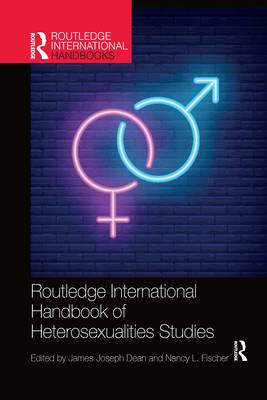
- Afhalen na 1 uur in een winkel met voorraad
- Gratis thuislevering in België vanaf € 30
- Ruim aanbod met 7 miljoen producten
- Afhalen na 1 uur in een winkel met voorraad
- Gratis thuislevering in België vanaf € 30
- Ruim aanbod met 7 miljoen producten
Routledge International Handbook of Heterosexualities Studies
Omschrijving
While a majority of people identify as "heterosexual" if asked about their sexual identity, what does that really mean? How did identifying as "straight" arise, particularly in relation to identifying as "queer," "lesbian," and "gay"? How are individuals socialized to view themselves and others as straight, even when many people are sexually fluid? How do institutions like government bodies, the educational system, and the family reinforce heterosexuality? This collection introduces the field of Critical Heterosexualities Studies and key lines of inquiry within the field.
Like Masculinity Studies and Whiteness Studies, Heterosexualities Studies critically examines the dominant category and identity group in order to illuminate the taken-for-granted assumptions that surround heterosexual identities. This critical perspective questions the idea that heterosexuality is natural, normal, and biologically driven. A recurring question throughout this Handbook is: what does it mean to say that there are multiple forms of heterosexuality? The answer is provided by cases showing how straightness varies between men and women but also across different racial groups, social classes, and one's status as trans or cisgender.
Organized around key themes of inquiry including heterosexualities across the life course, straight identities and their intersections, the power of straightness in state politics, and the changing meaning of heterosexualities in the context of sexual fluidity, this collection provides readers with an introduction to Critical Heterosexualities Studies through important theoretical statements, key historical studies, and current empirical research. Featuring both classic works and original essays written expressly for this volume, this collection provides a state-of-the-art overview of this exciting new field in sexualities studies.
Specificaties
Betrokkenen
- Uitgeverij:
Inhoud
- Aantal bladzijden:
- 436
- Taal:
- Engels
- Reeks:
Eigenschappen
- Productcode (EAN):
- 9781032178448
- Verschijningsdatum:
- 30/09/2021
- Uitvoering:
- Paperback
- Formaat:
- Trade paperback (VS)
- Afmetingen:
- 170 mm x 244 mm
- Gewicht:
- 689 g

Alleen bij Standaard Boekhandel
Beoordelingen
We publiceren alleen reviews die voldoen aan de voorwaarden voor reviews. Bekijk onze voorwaarden voor reviews.








